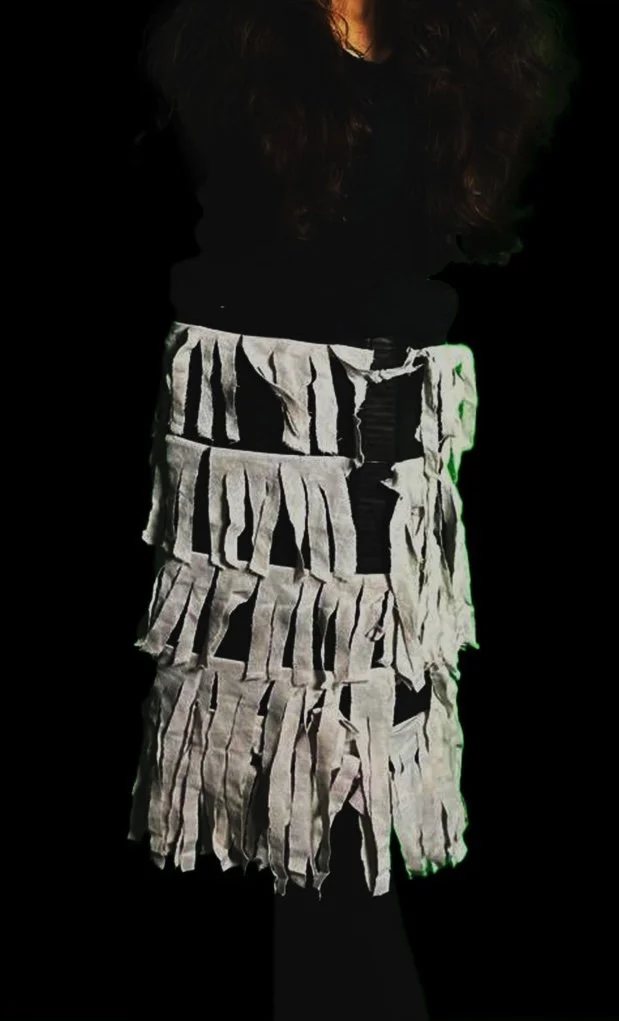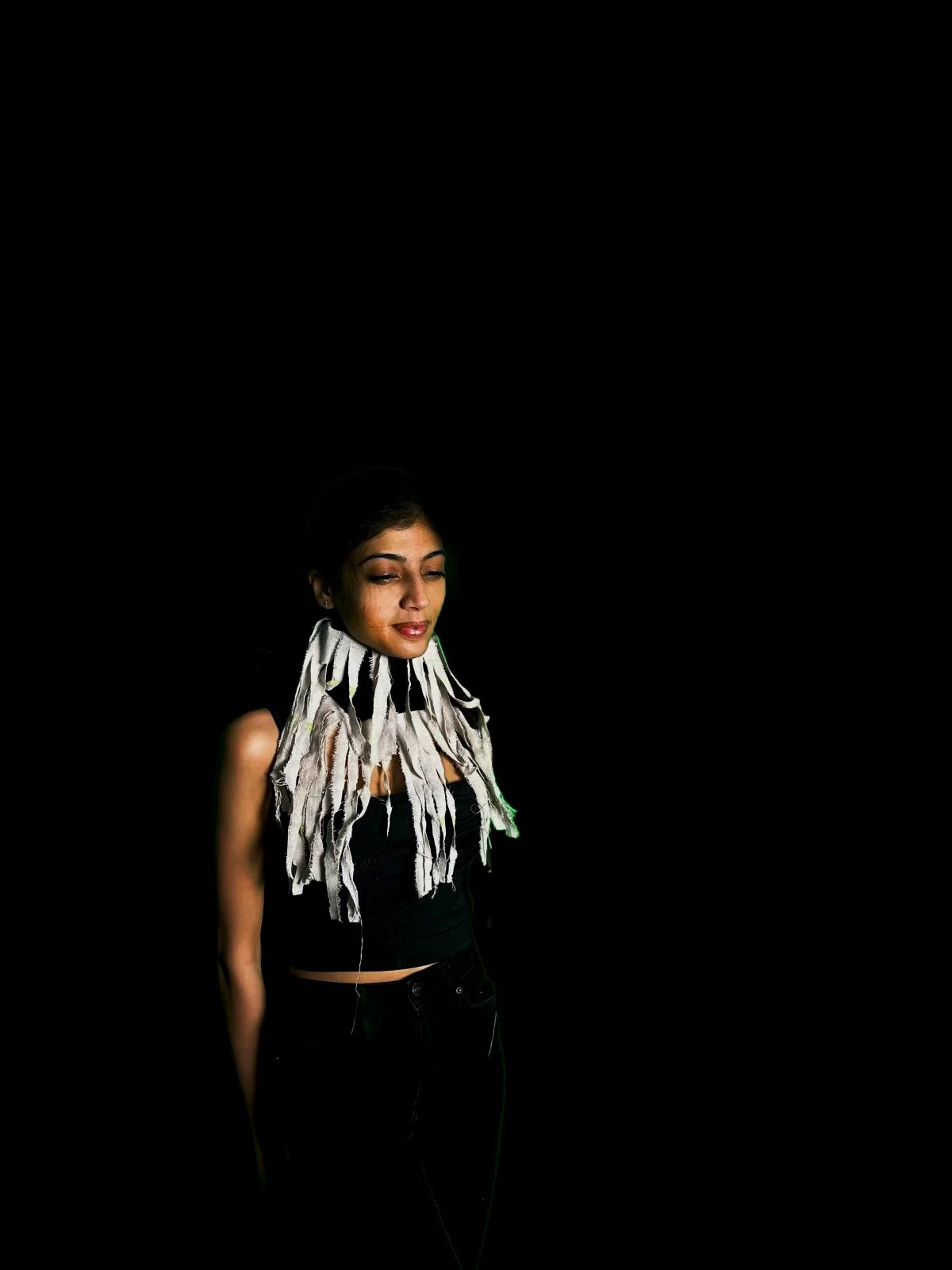Designed to Submit
Designed to Submit is a wearable exploration of what it means to lose autonomy. Inspired by the parasitic relationship between ants and Cordyceps fungus, each piece subtly restricts the body, limiting movement, altering posture, and guiding the wearer into unfamiliar shapes. But this isn’t justabout insects. These garments mirror the quiet forces that shape human behavior: social expectations, routines, systems of control that feel invisible until they’re felt. In these designs, submission is not brutal, it’s soft, elegant,and gradual.
In nature, when Cordyceps infects an ant, it infiltrates the body silently, hijacking its nervous system. The ant continues to walk, climb, and act, but no longer of its own will. Eventually, the fungus guides it to a high place, locks its jaws into a stem, and begins to grow out of its head, and in the end, kills the ant. This spectacle of soft domination became the metaphorical seed for the garments in Designed to Submit.
Each piece in this collection is constructed primarily from humble materials such as cardboard, cloth scraps, and tension, to emphasize the accessibility and everydayness of submission. These materials mimic the fungal growth’s texture and physicality, while their limitations become tools for restraint. The garments don’t scream control; they suggest it by subtly manipulating posture, restricting movement, and rerouting gesture. As the wearer walks, the body is guided into new, unnatural poses, echoing the slow transformation of the infected ant.
But this isn’t just about biology. The parasitic metaphor extends into the human world: the invisible forces that shape us. Social scripts, institutional rules, cultural expectations. These systems that guide us, often without resistance. These garments are meant to act as physical analogies for those systems. Submission, here, isn’t brutal. It’s soft. Gradual. Beautiful, even.
The installation invites viewers to question what controls them and also whether they would notice if they were being guided. It also asks: can there be a form of submission that isn’t entirely negative? Is yielding always a loss, or can it be a transformation?
In this way, Designed to Submit is not just wearable, it’s performative. It’s a wearable provocation. The line between human and host, self and system, choice and choreography is deliberately blurred, leaving the viewer with an unsettling question: who’s in control?





